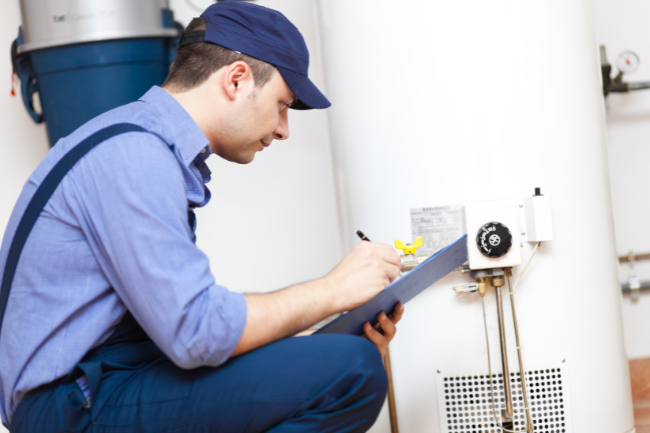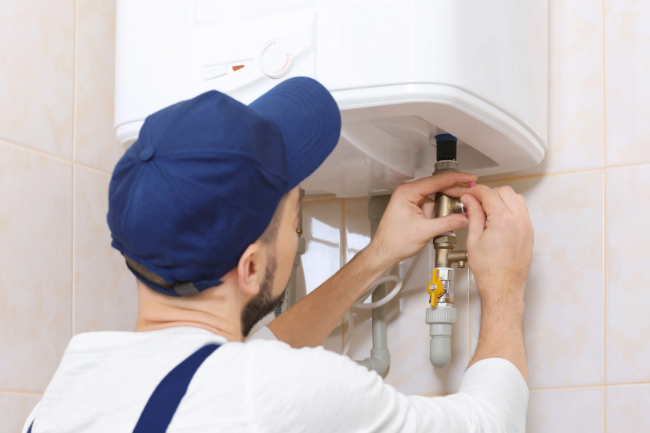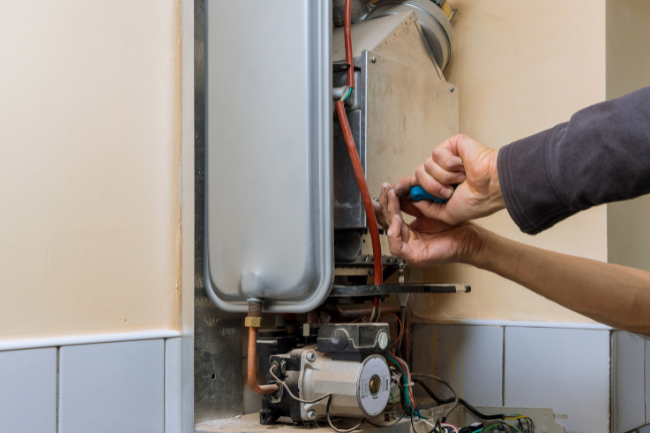Your Water Heater Maintenance Checklist
Posted by William Heinselman on
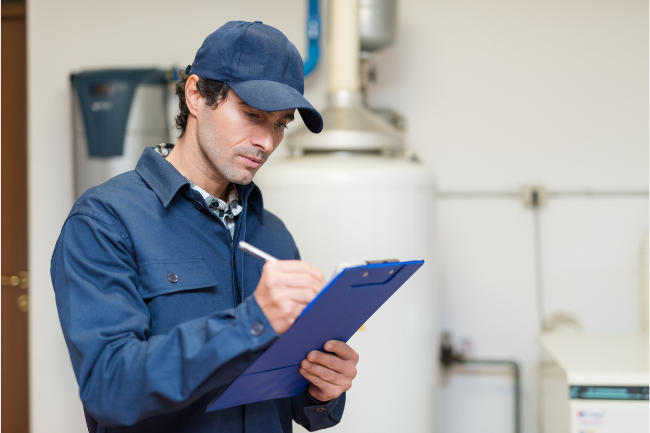
Your water heater is an essential appliance that often goes unnoticed until a problem arises. To ensure that your water heater operates efficiently, reliably, and safely, regular maintenance is key. In this article, we'll walk you through a detailed checklist of tasks and tips that will help you extend the lifespan of your water heater, improve its energy efficiency, and minimize the chances of unexpected breakdowns.
How Often Are Water Heater Inspections Needed?
The frequency of water heater inspections can vary depending on several factors, including the type of water heater you have, its age, and the local water quality. Here are some general guidelines for how often water heater inspections are needed:
- Annual Inspection: It is recommended to have an annual inspection of your water heater by a qualified technician. This regular check can help identify any potential issues early on and ensure that the water heater is operating efficiently and safely.
- Tankless Water Heaters: Tankless water heaters typically require less maintenance than traditional tank-style water heaters. However, they should still be inspected annually to ensure they are functioning correctly. Check the manufacturer's recommendations for your specific tankless unit.
- Local Water Quality: In areas with hard water or water with high mineral content, sediment buildup can occur more quickly. In such cases, more frequent inspections, perhaps every six to nine months, may be necessary to prevent sediment accumulation and maintain efficiency.
- Age of the Water Heater: Older water heaters, especially those nearing the end of their expected lifespan (usually around 10 to15 years for tank-style heaters), should be inspected more frequently, perhaps every six months, to catch any signs of wear or potential issues.
- Visible Signs of Problems: If you notice any visible signs of problems with your water heater, such as leaks, rust, strange noises, or inconsistent hot water supply, you should have it inspected immediately, regardless of its age or the last inspection date.
- DIY Maintenance: In addition to professional inspections, homeowners can perform some routine maintenance tasks themselves, such as flushing the tank to remove sediment. Depending on your water quality and usage, this may be needed every 6 to 12 months.
Always refer to your water heater's manufacturer guidelines and recommendations for specific maintenance intervals. Regular inspections and maintenance not only ensure the longevity and efficiency of your water heater but also contribute to safety by preventing potential hazards like leaks or overheating.
What to Look For During an Inspection
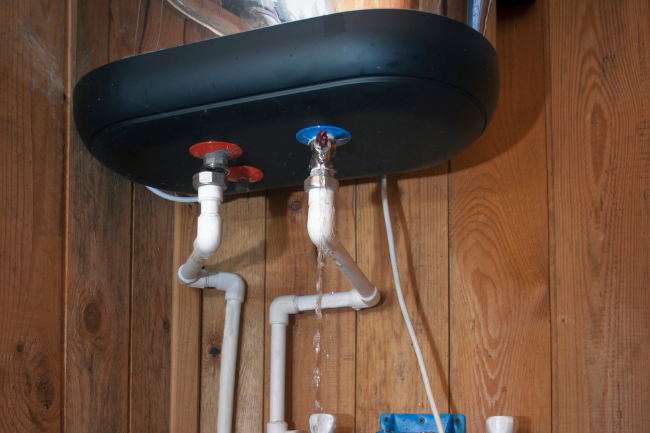
When conducting a water heater inspection, pay close attention to odor, leaks, and strange noises, as they can indicate potential issues. Here's how to look for and interpret these signs:
Odor
- Rotten Egg Smell (Sulfur or Gas Odor): If you detect a strong sulfur or gas-like odor around the water heater, it may indicate a gas leak or the presence of bacteria in the tank. In the case of a gas leak, it's crucial to turn off the gas supply immediately and contact a professional. If it's a bacteria issue, consider flushing and disinfecting the tank.
- Burnt Smell: A burnt or electrical odor could be a sign of overheating or a malfunctioning heating element. Turn off the power supply (for electric heaters) or the gas supply (for gas heaters) and contact a technician for inspection and repairs.
Leaks
- Visual Inspection: Look for any water puddles or moisture around the base of the water heater, especially if it's an older unit. Even small drips can indicate a leak. Inspect the temperature and pressure relief (TPR) valve, drain valve, and any pipe connections for signs of water seepage.
- Inspect the Tank: Check the tank's exterior for signs of rust or corrosion. If you notice rust on the tank, it may have weakened, leading to potential leaks. Also, inspect the anode rod for corrosion, as a deteriorated rod can result in leaks.
Strange Noises
- Popping or Crackling Sounds: These sounds may occur as sediment accumulates at the bottom of the tank. Sediment buildup can cause the heating element to overheat, leading to these noises. To address this, consider flushing the tank to remove sediment.
- Rumbling or Banging Noises: Such noises can also be related to sediment buildup or a broken dip tube. Flushing the tank or replacing the dip tube may resolve this issue.
- Tapping or Ticking Sounds: These sounds might indicate a thermal expansion issue, especially if you have a closed water system. Installing an expansion tank can help alleviate this problem.
It's essential to address any unusual odors, leaks, or noises promptly, as they can be early warning signs of more significant problems. If you're unsure about what you've observed during your inspection or if you suspect a serious issue, it's always advisable to consult a professional plumber or technician for a thorough evaluation and necessary repairs.
Here’s a Complete Water Heater Maintenance Checklist

A water heater maintenance checklist is a practical guide for homeowners and business owners to ensure their water heater functions efficiently and safely. Regularly following this checklist can help you maintain a reliable and energy-efficient water heater while minimizing the risk of unexpected breakdowns and safety hazards.
Power
When conducting water heater maintenance, it's crucial to check the power supply, especially for electric water heaters. Begin by turning off the power at the circuit breaker or disconnect the switch dedicated to the water heater. This precaution ensures your safety while inspecting or performing any maintenance tasks involving electrical components, such as the heating element or thermostat.
It's essential to handle electrical connections with care and only engage with them when the power is safely switched off. This simple step can prevent accidents and ensure a smooth and safe maintenance process for your electric water heater.
Surrounding Area
Inspecting the surrounding area of your water heater is a crucial step in maintenance. Ensure there is adequate clearance around the unit, typically about two feet of space, to allow for proper ventilation and ease of access for servicing. Clear away any debris, flammable materials, or obstructions to prevent fire hazards.
Additionally, check for signs of water damage or moisture, as this could indicate a hidden leak. Maintaining a clean and well-ventilated space around your water heater not only promotes safe operation but also facilitates easier inspections and repairs when needed.
Water Pressure
High water pressure can strain the unit and its components, potentially leading to leaks or damage. To check the water pressure, attach a pressure gauge to a faucet or hose bib near the water heater. Turn on the faucet and observe the pressure reading.
The ideal range is typically between 50 and 60 psi (pounds per square inch). If the pressure exceeds this range, consider installing a pressure-reducing valve to protect your water heater and plumbing system. Maintaining proper water pressure ensures the longevity and efficient operation of your water heater while preventing costly repairs down the line.
Leaks
Start checking for leaks by visually examining the area around the base of the unit for any signs of moisture or puddles. Check all the connections, including the pressure relief valve, drain valve, and pipe fittings, for any visible leaks.
Additionally, scrutinize the tank's exterior for rust or corrosion, as these can weaken the tank and lead to leaks over time. Addressing leaks promptly can prevent water damage, energy waste, and more severe issues, ultimately ensuring the continued efficiency and safety of your water heater.
Flush Out the System
Flushing out your water heater is a crucial maintenance task that involves draining and cleaning the sediment buildup that accumulates at the bottom of the tank over time.
To do this, turn off the power supply (electricity or gas) to the heater, shut off the cold water inlet valve, and connect a garden hose to the drain valve at the base of the tank. Open a hot water faucet in your home to allow air into the tank, then open the drain valve, allowing the water to flow out along with sediment.
Flushing helps maintain the heater's efficiency and prolongs its lifespan by preventing sediment-related issues.
Inspect the Anode Rod
To check the anode rod, turn off the power supply and water inlet, then locate and access the anode rod port on the top of the tank. Carefully remove the anode rod using a wrench and inspect its condition. If it's significantly corroded or less than half an inch thick, it's time for a replacement to maintain the protective function.
Temperature & Pressure Relief Valve
The TPR valve is designed to release excess pressure and temperature to prevent the tank from over pressurizing. To inspect it, carefully lift the lever on the valve, allowing a small amount of water to discharge. This should be done with caution, as the water can be very hot. If the valve doesn't open or close properly, or if it continues to leak after testing, it needs immediate replacement to ensure your water heater operates safely.
Regular TPR valve checks are essential to maintain the integrity of your water heater system and protect against potential catastrophic failures.
Benefits of Routine Water Heater Maintenance
Routine water heater maintenance offers several key benefits, such as:
- Improving efficiency by removing sediment buildup, resulting in lower energy consumption and reduced utility costs.
- Extending the lifespan of your water heater, reducing the need for premature replacements and costly repairs.
- Preventing major issues by addressing minor problems early, ensuring a consistent hot water supply, and minimizing the risk of cold showers.
- Enhancing safety by checking and maintaining essential features like the TPR valve, which prevents potential catastrophic failures.
- Safeguarding against leaks, reducing property damage and insurance claims.
- Helping maintain healthier water quality by preventing bacterial growth in the tank and compliance with warranty requirements ensures peace of mind.
Schedule Professional Water Heater Maintenance
Incorporating regular water heater maintenance into your property care routine is a smart and cost-effective decision. By scheduling these essential check-ups, you not only prolong the life of your water heater and enhance its efficiency but also ensure the safety and reliability of your hot water supply. It's a small investment of time and effort that pays off in significant ways, from lower energy bills to fewer repair expenses and a worry-free hot water experience.
Don't wait for a sudden breakdown or a chilly surprise in the shower—take proactive steps by scheduling water heater maintenance with Sacramento plumbing professionals today and enjoy a well-functioning, long-lasting, and safe appliance for years to come. Reach out to the experts at Express Sewer & Drain to learn more about our water heater services!
Topics: Water Heaters, DIY

